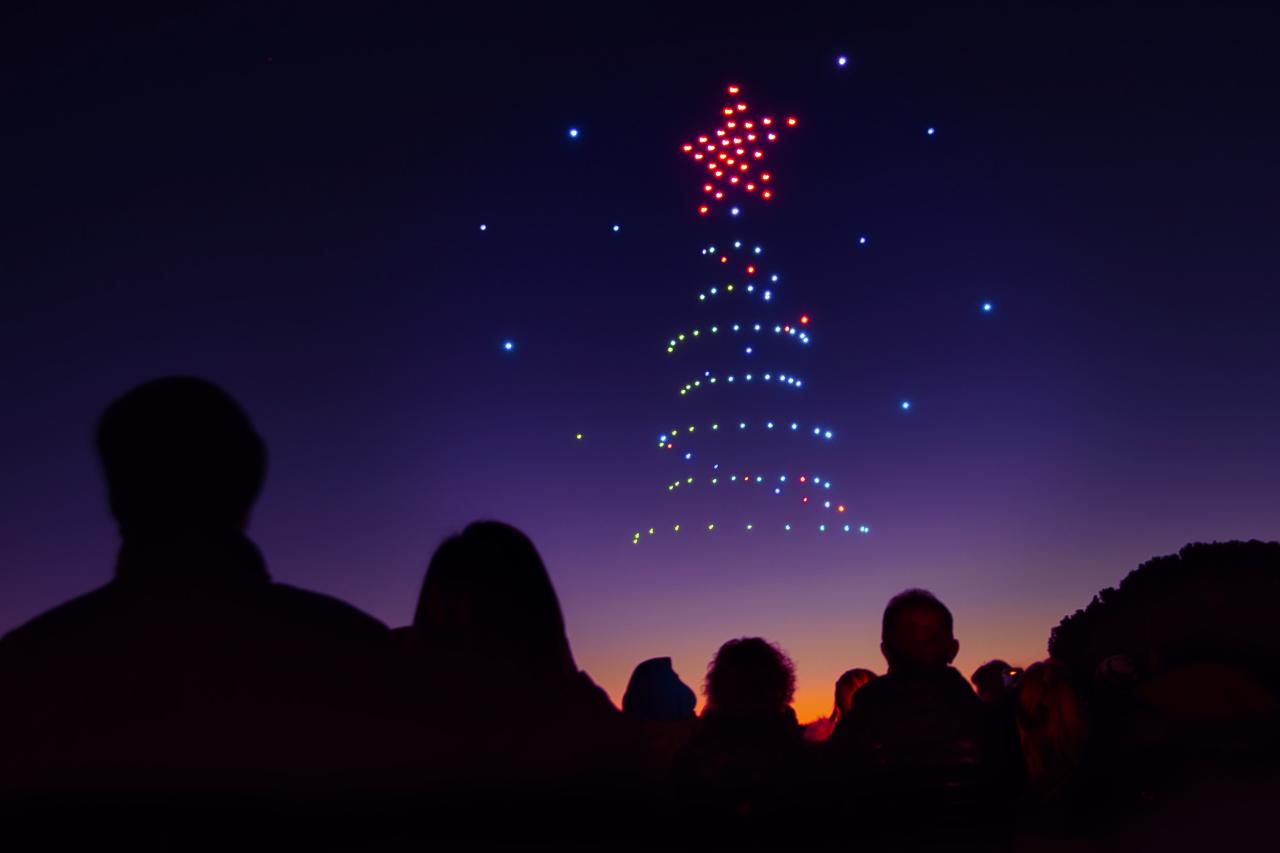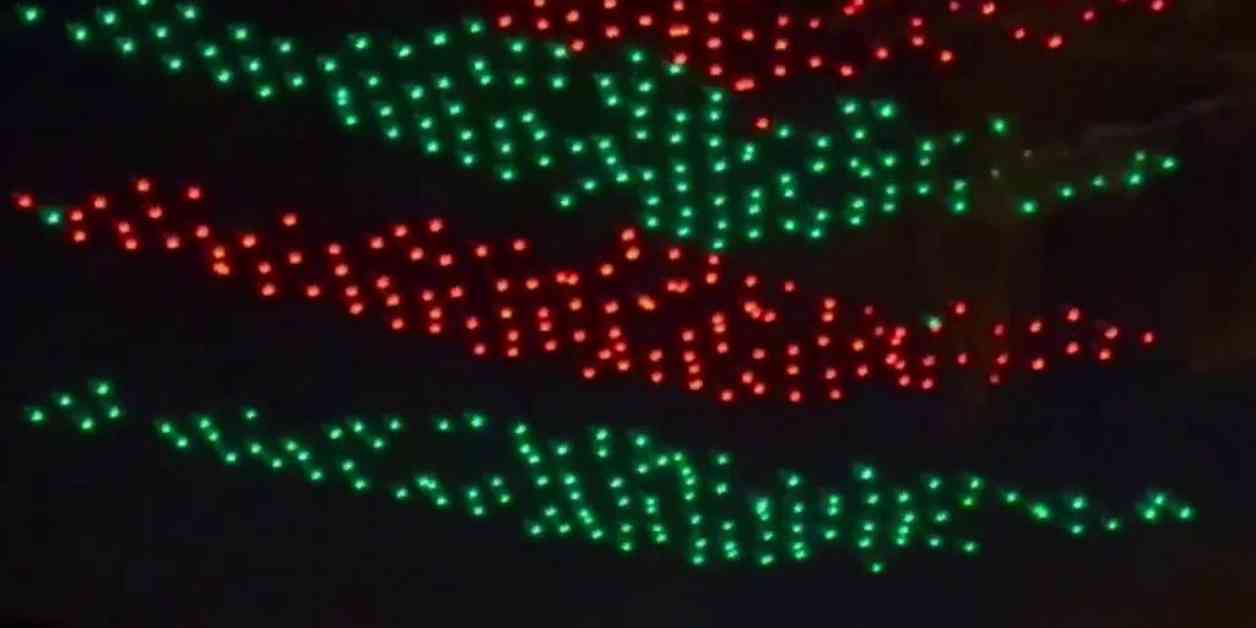Drone show accidents, while relatively infrequent, highlight critical safety concerns within the rapidly evolving world of drone technology. These spectacular displays of coordinated aerial artistry can quickly turn disastrous if malfunctions occur, resulting in everything from minor glitches to catastrophic failures with devastating consequences. This analysis delves into the multifaceted nature of such incidents, examining the contributing factors and exploring strategies for improved safety.
From technical malfunctions and environmental challenges to human error and inadequate safety protocols, a multitude of elements can contribute to drone show accidents. Understanding these factors is crucial in developing effective preventative measures and ensuring the continued safe enjoyment of these awe-inspiring performances. We will explore various accident types, analyze contributing factors, and investigate the roles of technology, human error, and environmental conditions.
The goal is to provide a comprehensive understanding of the risks involved and the measures needed to mitigate them.
Drone Show Accidents: A Comprehensive Analysis
Drone shows, with their captivating displays of synchronized aerial acrobatics, have become increasingly popular. However, the inherent complexities of operating multiple drones simultaneously present significant safety challenges. This article delves into the various aspects of drone show accidents, exploring their causes, prevention strategies, and future technological advancements aimed at mitigating risks.
Types of Drone Show Accidents

Drone show accidents encompass a range of incidents, from minor malfunctions to catastrophic failures resulting in injuries or fatalities. Common causes include GPS interference, battery failures, software glitches, and pilot error. Accidents can be categorized by severity: minor malfunctions (e.g., a single drone losing synchronization), major crashes (multiple drones colliding or falling), injuries (resulting from falling drones or debris), and fatalities (rare but possible).
| Accident Type | Cause | Severity | Outcome |
|---|---|---|---|
| Loss of Synchronization | GPS interference, software glitch | Minor | Show temporarily paused, affected drones recovered. |
| Mid-air Collision | Pilot error, communication failure, software malfunction | Major | Multiple drones damaged, show aborted. |
| Uncontrolled Descent | Battery failure, motor malfunction | Major | Drone crash, potential for property damage or injury. |
| Fatal Accident | Catastrophic system failure, impact with bystander | Catastrophic | Fatality, significant legal and public relations consequences. |
Safety Protocols and Regulations
Stringent safety regulations and best practices are crucial for preventing drone show accidents. These vary across countries and regions, but generally include pre-flight checks, emergency procedures, designated airspace, and pilot qualifications. For instance, the FAA in the United States has specific regulations for drone operations, including airspace restrictions and pilot certifications. In contrast, the European Union’s regulations emphasize a more risk-based approach.
- Comprehensive pre-flight inspections
- Redundant systems (backup power, communication links)
- Emergency landing procedures
- Pilot training and certification covering emergency response and risk management
- Regular maintenance and software updates
- Weather monitoring and contingency plans
- Strict adherence to airspace regulations
Technological Factors Contributing to Accidents

Technological malfunctions significantly contribute to drone show accidents. GPS interference or malfunctions can lead to drones straying from their programmed flight paths, resulting in collisions or uncontrolled descents. Battery failures, often due to age, overuse, or environmental factors, can cause sudden power loss. Managing a large swarm of drones simultaneously presents complex challenges, requiring robust communication and control systems.
Recent drone show accidents highlight the importance of robust safety protocols. The potential for mishaps underscores the need for reliable monitoring systems, such as those employed in sophisticated applications like the cobequid pass camera , which offers high-resolution imagery for detailed observation. Analyzing footage from such systems could significantly aid in accident investigations and prevent future occurrences of drone show mishaps.
A single point of failure can cascade, affecting the entire show.
Environmental Factors and Their Impact
Adverse weather conditions such as strong winds, rain, or fog can severely impact drone show safety. High winds can make it difficult to control drone movements, increasing the risk of collisions or crashes. Rain can damage electronics and reduce visibility, while fog can disrupt GPS signals. Environmental obstacles like buildings, trees, and power lines pose further risks, requiring careful flight path planning and obstacle avoidance strategies.
Recent drone show accidents highlight the need for robust safety protocols. These incidents underscore the importance of precise coordination, which is something the folks behind the norad santa tracker phone number likely understand well, given their complex tracking operation. Hopefully, investigations into these drone malfunctions will lead to improved regulations and prevent future mishaps.
Detailed site surveys and risk assessments are essential.
Human Error and its Contribution
Human error plays a significant role in drone show accidents. Pilot errors, such as improper flight maneuvers or inadequate response to emergencies, can have devastating consequences. Inadequate planning, including insufficient risk assessment or failure to account for environmental factors, also contributes. Poor communication between pilots and ground crew can lead to confusion and errors.
- Pre-flight checklist review
- Emergency procedure rehearsals
- Clear communication protocols
- Regular training and competency assessments
Post-Accident Investigation and Response

Following a drone show accident, a thorough investigation is crucial to determine the cause and implement corrective measures. This involves data analysis from flight recorders, drone logs, and witness statements. Detailed accident reports are essential for identifying systemic issues and improving safety protocols. Effective post-accident response involves securing the area, ensuring public safety, and minimizing further damage or harm.
Future Prevention Strategies, Drone show accident
Future drone show safety relies on technological advancements and improved safety protocols. AI and machine learning can enhance collision avoidance systems, enabling drones to autonomously navigate complex environments and avoid obstacles. Redundant systems and fail-safe mechanisms can minimize the impact of individual component failures.
A hypothetical improved drone control system might incorporate advanced sensor fusion (combining GPS, LiDAR, and vision systems) for precise positioning and obstacle detection. AI-powered algorithms could predict and prevent potential collisions, automatically adjusting drone flight paths in real-time. A decentralized control architecture could reduce the impact of single points of failure, ensuring continued operation even if individual drones malfunction.
This system would incorporate real-time data analysis and predictive modeling to anticipate and mitigate potential hazards before they occur. Redundant communication channels would provide multiple backup pathways for control signals, ensuring continued drone responsiveness even in the event of signal interference.
In conclusion, preventing drone show accidents requires a multi-pronged approach encompassing stringent safety regulations, advanced technological solutions, rigorous pilot training, and a proactive approach to risk mitigation. By understanding the complexities of these incidents—from technical malfunctions and environmental factors to human error—we can pave the way for safer, more reliable, and ultimately, more enjoyable drone shows in the future. Continuous improvement in technology, robust safety protocols, and a culture of safety awareness are essential to minimize the risks associated with these increasingly popular spectacles.
Quick FAQs: Drone Show Accident
What is the average cost of a drone show accident?
The cost varies significantly depending on the scale of the accident, damage to property, injuries sustained, and legal ramifications. It can range from a few thousand dollars for minor malfunctions to millions in cases of major damage or fatalities.
Who is responsible in case of a drone show accident?
Responsibility depends on the cause of the accident. It could be the drone operator, the show organizer, the manufacturer (if a product defect is involved), or a combination of parties. Legal investigation usually determines liability.
Drone show accidents, while rare, highlight the inherent risks involved in these spectacular displays. Understanding these risks is crucial, and researching successful shows, like those featured in articles about the florida drone show , can provide valuable insights into safety protocols and best practices. Ultimately, minimizing the chance of a drone show accident requires meticulous planning and execution.
What insurance is needed for drone show operations?
Comprehensive liability insurance is essential, covering potential damages, injuries, and legal costs. The specific coverage amount should reflect the scale and risks of the drone show.
Are there international standards for drone show safety?
While no single global standard exists, many countries have their own regulations. International organizations are working towards harmonizing safety standards for drone operations, including drone shows.
